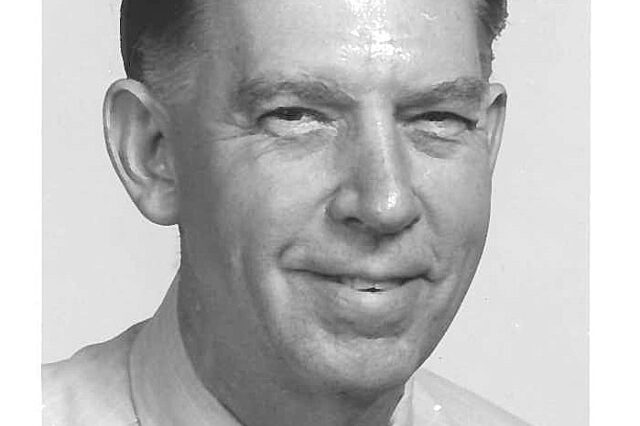UF Health mourns the loss of Hal Bingham, M.D., noted surgeon and burn care pioneer

A bit of a wide grin and a squinty look. A surgeon, a teacher, a clarinetist and a family man. That’s some of the ways faculty and staff at the UF College of Medicine’s department of surgery remember Hal Gene Bingham, M.D.
Bingham, a former chief of plastic and reconstructive surgery, passed away Sept. 29 at the age of 93.
His influence in surgery spanned a variety of areas. He served in the chief role for 23 years and led the growth of the regional Burn Intensive Care Center at UF Health Shands Hospital in 1978. Under his guidance, the unit doubled in size, while the number of patient beds increased by 40%.
At the time, UF Health Shands was one of four Florida hospitals staffed and equipped for long-term burn intensive care. In 1987, the team treated more than 100 critically burned patients, including 23 children.
“He was very concerned and passionate about his patients,” said colleague Timothy C. Flynn, M.D., FACS, an emeritus professor of surgery in the UF College of Medicine. “Bingham worked hard to bring contemporary burn care to Florida. He was devoted to making the burn unit work and taking care of the patients that others gave up on.”
Notably, Bingham was one of the first Florida surgeons to use skin cultivated in a laboratory, or “test tube skin,” to repair burn-damaged skin in patients. This helped circumvent the problems associated with transplanting donor skin, like possible rejections, and increased the amount of available skin for grafting.
In addition to his surgical experiences, Bingham was shaped by two things: his time in the U.S. Army and Air Force, and his love for his family.
The former resulted in a Bronze Star Medal, the U.S. military’s fourth-highest individual honor. A foot soldier from 1943-46, Bingham fought in the Battle of the Bulge, which was the last major German offensive crusade on the Western Front during World War II. He self-published a book about his combat experiences. Bingham also served as a captain in the Air Force for two years.
“I think after his time on the battlefront, everything else was just gravy,” Flynn said. “He was a very even-tempered and quiet man whose moral compass always pointed north.”
Most important, however, was his family. Bingham was immensely proud of his five children and his grandchildren. He was devoted to his wife, Mary Ann Beal Bingham, who passed in 2005.
“He was, first and foremost, a man who loved his family,” said Bruce Mast, M.D., FACS, a professor in the UF College of Medicine and chief of plastic and reconstructive surgery.
A clarinetist, Bingham was also a part of the Docs of Dixieland, a musical group composed of UF physicians, a lawyer, a clothing store manager, a director at the Malcom Randall VA Medical Center, and various medical students and residents. A press clipping from 1982 cited the major ingredients of the group as “love of good American jazz and lots of talent.”
“He was very much a musician,” Mast said. “I remember I went to one of their concerts and my wife was 7 months pregnant. Every time the music swelled, the baby would give a kick.”
While his influence is brick and mortared in the burn unit, it also lives on in those he taught.
“The real legacy lies in the residents he worked with,” Mast said.
Throughout his career, Bingham conveyed his devotion to his patients’ recovery. This is perhaps best summed up by an excerpt from an interview in 1990.
“In burn management,’’ he said, “you have to be an absolute optimist that sooner or later you’re going to get the wound healed.”